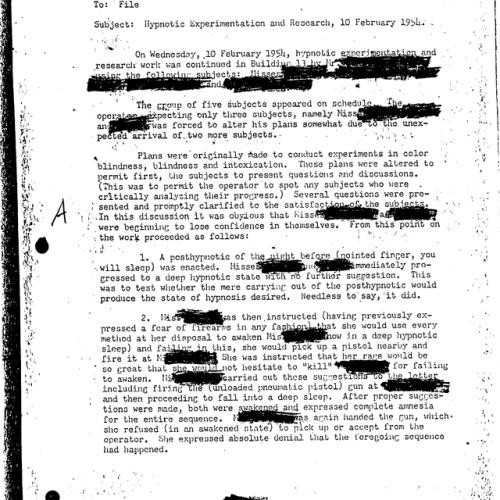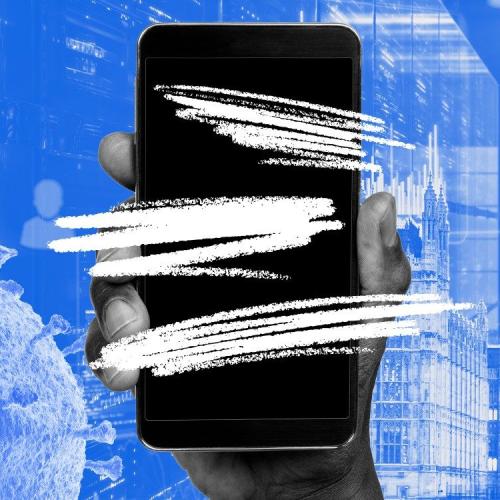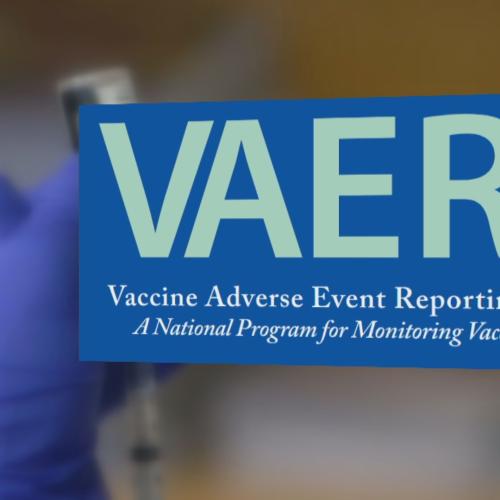Inspiring: Power of Art & Music News Articles
Below are key excerpts of inspiring news articles on the power of art from reliable news media sources. If any link fails to function, a paywall blocks full access, or the article is no longer available, try these digital tools.
For further exploration, delve into our Inspiration Center.
Crosswalks don’t work. According to various studies, only between five and fifteen percent of drivers slow down at pedestrian crossings. The vast majority of drivers simply don’t pay attention to them. America’s deadly streetscape is the subject of The Street Project, a new PBS documentary about citizen-led efforts to make streets safer. When filmmaker Jennifer Boyd started making it, she assumed distracted driving must be behind the alarming rise in pedestrian deaths. But as she soon learned, digital screens are less of a culprit than most people realize. “Less than one percent of pedestrian deaths involved portable electronic devices,” she found. Instead, she discovered that two of the biggest factors are speeding and bigger cars. If speeding and visibility are the problem and crosswalks can’t stop it, color might. The Asphalt Art Initiative, a program funded by Bloomberg Philanthropies, provides grants to create art to modify dangerous streets. One of these projects is in Chattanooga, Tennessee, where artists and residents transformed a high-traffic commercial thoroughfare with a block-long asphalt mural, while students marked safe walking paths in the area with stencils and wheat paste. Overall, according to the Initiative, “the data showed a 50 percent drop in crashes involving pedestrians or cyclists and a 37 percent drop in crashes leading to injuries. Intersections with asphalt art saw a 17 percent reduction in total accidents.”
Note: Don't miss the great pictures and video of public art available at the link above. Explore a treasure trove of concise summaries of incredibly inspiring news articles which will inspire you to make a difference.
Pedro Reyes says being Mexican is like living in an apartment where an upstairs neighbor has a leaking swimming pool. "Just what is leaking," says Reyes, "is hundreds of thousands of guns." Reyes believes art should address social issues like gun violence, even when they're difficult and controversial. "We have to be allowed to ask questions," he says. "If you are not allowed to ask questions, you are not free." Reyes also addresses the issue of gun violence in another way, by using guns themselves. His first project began in 2007 in the Mexican city of Culiacan. As part of a campaign to curb shootings, the city collected 1,527 guns. He used them to create art. "Those 1,527 guns were melted and made into the same number of shovels," he says. "So for every gun now, there's a shovel. And with every shovel, we planted a tree." Now Reyes is working on a new project. It is one that transforms guns into something more musical. An exhibition of the work is on display at the University of South Florida's Contemporary Art Museum. It's called "Disarm," and consists of guns that have been turned into musical instruments." To me at least," Pedigo says, "the concept is about taking weapons that are destructive in nature and chaotic and trying to make them for something else. So, instead of objects of destruction, they become objects of creation." That's exactly Reyes' point. Art, he says, is about transformation. "It's the same metal," he says, "but it is no longer a gun. It's now a flute or a guitar."
Note: Don't miss the pictures of Reyes' latest inspiring project at the link above.
“Dance is a language of the body,” says Julia F. Christensen, a neuroscientist at the Max Planck Institute for Empirical Aesthetics and author of Dancing is the Best Medicine. “Our brain understands gestures that we may do as we dance like an expressive language.” For centuries, communities have turned to dance not only for celebration but for ritual and healing. Long before scientists tracked brain waves or measured neurotransmitters, dancers had an intuitive understanding of the power of moving together. Now, the research is starting to catch up. A 2024 meta-analysis published in The BMJ reviewed 218 clinical trials and found that dance reduced symptoms of depression more than walking, yoga, strength training, and even standard antidepressants. While only 15 of the studies focused specifically on dance, the results were enough to grab the attention of researchers. Our brains are wired for rhythm—and dancing engages our entire nervous system. Some neuroscientists describe this full-body stimulation as a neurochemical symphony. Anticipating a melody can trigger the release of dopamine. Physical movement boosts endorphins. Dancing with others increases oxytocin. Studies have shown that this trifecta can enhance mood, increase social bonding, and reduce stress. Dance offers a unique way to reconnect with oneself. It can activate emotional, cognitive, and sensory pathways, reawakening a sense of connection within and beyond the self.
Note: Explore more positive stories like this on the power of art and healing our bodies.
From a Tampa performing arts conservatory comes the story of a blind jazz saxophonist who uses his disability as a teaching tool. He encourages his students to act on instinct; to feel the music through their instruments, and not let the waking world deceive them. “Welcome to every day of my life,” says Matthew Weihmuller in his jazz improvisation class after turning the lights off. “Then we have a big laugh,” he adds. When Weihmuller started playing, he needed braille sheet music, and pieces would take months; even years to learn. As if that weren’t difficult enough, few people in the country were capable of providing braille music, so he started “brailling” his own, with the help of his mom. “They can’t look at their instrument. Now, they have to feel their instrument with their fingers and hands, right?” Weihmuller told Fox 13. “Now, we’ve got to listen to the music. We can’t read it. It forces the students to use their other senses.” During improvisational sessions, a musician has to be ready for sudden changes in time signature or key. This is nearly impossible to express through sheet music. At least in this regard, the children are learning in the best way for this unorthodox, yet traditional form of jazz music. As an educator with blindness, Weihmuller stresses turning any disadvantage into an advantage, a teaching philosophy that has led some students to tell the man that he has changed the way they look at life.
Note: Read more inspiring news articles on the power of art. For more, explore our uplifting Inspiration Center, which focuses on solutions and the best of humanity and life.
Why do we care about rhythm? It connects us to the world. It plays a role in listening, in language, in understanding speech in noisy places, in walking, and even in our feelings toward one another. Rhythm is much more than a component of music. We experience the rhythmic changes of the seasons. Some of us have menstrual cycles. We have circadian rhythms – daily cycles of mental and physical peaks and troughs. Tides, 17-year cicadas, lunar phases, perigees, and apogees are other naturally occurring rhythms. Human-made rhythms include the built world – street grids, traffic lights, crop fields, mowed designs in baseball diamond outfields, the backsplash behind the kitchen counter, spatial patterns in geometric visual artforms. Rhythms in the brain have been called out as a basis for consciousness itself. Even in very young children, being (literally) "in sync" with another person engenders positive feelings toward them. Music in general, and rhythm in particular, does an uncommonly good job fostering a sense of community. Indeed, music being played at negotiation sessions helps to smooth the conversations and leads to breakthroughs and compromises. Musicians Without Borders is used to form relationships in troubled regions around the world, to bring hope, comfort, and healing to diverse populations. The Resonance Project and the Jerusalem Youth Chorus, which are forming bonds between Israeli and Palestinian children, are other examples of using musical rhythm to overcome differences.
Note: Explore more positive stories like this in our comprehensive inspiring news articles archive focused on solutions and bridging divides.
They’ve been preparing every Tuesday for the past four months, learning to belt out favorites like “Singin’ in the Rain” and “Bridge Over Troubled Water.” Those attending their first Giving Voice concert may not know what to expect—it is a dementia-friendly choir, meaning many of the participants have some form of dementia and are joined onstage by caregivers and loved ones. Giving Voice, a nonprofit dedicated to helping people in all stages of memory loss, was founded in 2014 with an initial chorus of 35 members. There are now more than 70 “memory choirs” throughout the world that use Giving Voice’s model as the foundation for their programs—and a slew of similar dementia-friendly choirs and bands, including Music Mends Minds, AlzheimHER’s Chorus, and The Unforgettables Chorus. The premise of these memory choirs is simple but powerful: Making music is not just a feel-good community activity; it’s also a powerful weapon to help preserve memories and enhance brain function. Over 55 million people worldwide are believed to be living with dementia. The success of memory choirs [raises] scientific questions about whether music therapy can rewire the brain in addition to improving mood and fostering community. Borna Bonakdarpour, a behavioral neurologist ... is on a quest to show that social singing can help address some of the underlying causes of the disease, such as decreased mental stimulation, isolation, and inactivity.
Note: Explore more positive stories like this on the power of art.
Boogying the night away produces meaningful improvements in one's body mass and waist circumference in people who are overweight or obese, a new study found. Dancing was also seen to improve blood pressure, insulin sensitivity, physical fitness, cognitive disorders, hypertension, cardiovascular ailments, diabetes, and mental health—in other words, all the root causes of the non-communicable diseases that kill most people in the West. The researchers believed that dance would be a more ideal form of exercise because it is sustainable—it's a sociable, entertaining way of exercising that participants will enjoy, rather than a drudgery they have to push themselves through. “Dance is effective on fat loss in people overweight and obese and has a significant improvement on body composition and morphology,” said Zhang Yaya, a Ph.D. student at Hunan University, China. To get their results, published in the journal PLoS ONE, the team studied data from 646 participants who were overweight and obese across ten different studies. They found that dance is very effective for improving body composition and showed that more creative dance types had the most pronounced body composition improvement when compared with traditional dance. Improvements were also found in overweight children and patients with Parkinson’s disease.
Note: Explore more positive stories like this in our comprehensive inspiring news articles archive focused on solutions and bridging divides.
A patient who was left almost completely paralyzed from a rare disease is now walking and talking again, after a music therapist prescribed mindful listening to his favorite song every night–in this case, a tune by The Carpenters. 71 year-old Ian Palmer was struck down with Guillain-Barr© syndrome last June, forcing him to spend seven months in a hospital where he was unable to walk or speak properly. The rare condition happens when a person's own immune system attacks their body's motor nerves, causing muscle weakness and sometimes paralysis. But when Ian was transferred to Sue Ryder Neurological Care Centre, a state-of-the-art care unit in Lancashire, England, clinicians used music therapy techniques to overcome 'near total paralysis of his body'. His specialist, Clare, taught him mindfulness techniques using his favorite records–and he began listening to The Carpenters each night. Ian was admittedly skeptical, but he can now walk 2 miles a day (3k) and have conversations with his family after the exercises "opened up" his brain. He's never been very musical, so when Sue Ryder first suggested music therapy he said, 'What good is that going to do?' "I'm a typical Northern man, and I thought, 'What's a girl with a guitar going to do for me–get me to the gym.'" "But it really worked. Clare sat me down and explained the process. I learned that music is very unlike other therapies, as it opens up all of the brain."
Note: Watch a profoundly touching documentary about a man who takes on the broken healthcare system to demonstrate music's ability to heal, combat memory loss, and awaken the soul and the deepest parts of humanity. Explore a treasure trove of concise summaries of incredibly inspiring news articles which will inspire you to make a difference.
Music, it turns out, is medicine for the mind. [A 2021 study] set out to see what happens in the brain when a person with mild cognitive impairment or early Alzheimer’s disease listens to their favorite playlist for an hour every day. The 14 participants had brain scans and took neuropsychological tests that involved memory exercises. At the end of the trial the participants showed a small but statistically significant improvement in memory — something that is extremely unusual. New connections had formed between different regions of the brain ... that actually changed brain plasticity and also improved function in relaying information. Thaut says the research shows that while music is in no way a cure for Alzheimers, it can provide a "cognitive boost." That’s why a person with memory impairment may not recall their daughter’s name but may remember all the lyrics to her favorite lullaby. “It’s pulling from emotions, it’s pulling from feelings, it’s pulling from interpersonal associations, it’s pulling from a date or time or period of one’s life — historical things,” [Concetta] Tomaino says. Music serves as a clue, coaxing the brain to fill in the blanks. “It is painful to watch your beloved slip away inch by inch,” [Carol Rosenstein] says. “And if it weren’t for the music, I wouldn’t be sitting here today. As a caregiver and first responder, I can tell you, I would have never survived the journey.”
Note: Watch a deeply moving video of Henry, a 94-year old man with dementia, experience music for the first time in years.
The bunker houses the Torolab project known as La Granja Transfronteriza, or La Granja (The Farm) for short a place brimming with the arts and more that draws community members of all ages. As Tijuana garnered a reputation as one of the most violent places in the world, Camino Verde held the inglorious title of the most dangerous neighborhood in the city. But today, Camino Verdes story is changing. And La Granja, founded in 2010, has been no small factor. On weekday afternoons, the bunker is bustling with young kids screeching out notes on their violins under the guidance of instructors. Families gather on the weekend to grow vegetables in the nascent community garden. Theres a computer lab upstairs, and parents can pursue their GED certificates. Most strikingly, however, violence in Camino Verde has plunged, falling by 85 percent since 2010. This was one of the most violent places in the world, where you werent expected to make it out, [Torolab founder] Raúl Cárdenas Osuna says. Now its common to see governments and arts schools from around the globe coming to the neighborhood to learn. When, in 2010, a group of local leaders came together to talk about what they could do to change Tijuanas violent trajectory, Crdenas took charge of pinpointing where they could make the biggest difference. What people want and what people need is to have a livable space, he says. Already, the project has received multiple prizes and global recognition.
Note: Explore a treasure trove of concise summaries of incredibly inspiring news articles which will inspire you to make a difference.
When Paul McCartney wrote “Get Back,” he never would have predicted how useful or relevant the song would become for music therapists. In new research, Psyche Loui, an associate professor of music ... found that for older adults who listened to some of their favorite music, including The Beatles, connectivity in the brain increased. Specifically, Loui—and her multi-disciplinary team ... discovered that music bridged the gap between the brain’s auditory system and reward system, the area that governs motivation. “There’s something about music that is this functional connectivity between the auditory and reward system, and that’s why music is so special and able to tap into these seemingly very general cognitive functions that are suddenly very engaged in folks with dementia who are hearing music,” said Loui. The original idea for this research came out of Loui’s own experiences playing music in nursing homes. She recalled how people who couldn’t finish a sentence or thought would suddenly harmonize and sing along to a song she was playing. “[Music] seems to engage the brain in this way that’s different than everything else,” Loui said. What the researchers found was striking: Music was essentially creating an auditory channel directly to the medial prefrontal cortex, the brain’s reward center. Music that was both familiar and well-liked tended to activate the auditory and reward areas more. The music that participants selected themselves provided an even stronger connection.
Note: Explore a treasure trove of concise summaries of incredibly inspiring news articles which will inspire you to make a difference.
Henry Dryer sits slumped over the tray attached to his wheelchair. He doesn't speak, and rarely moves, until a nursing home worker puts his headphones on. Then Dryer's feet start to shuffle, his folded arms rock back and forth, and he sings out loud in perfect sync with his favorite songs. "I feel a band of love, dreams," said Dryer, 92, who has dementia. "It gives me the feeling of love, romance!" Henry is one of seven patients profiled in the documentary "Alive Inside," a heartwarming look at the power of music to help those in nursing homes. "There are a million and a half people in nursing homes in this country," director Michael Rossato-Bennett told ABC News. "When I saw what happened to Henry, whenever you see a human being awaken like that, it touches something deep inside you." Rossato-Bennett said he took on the documentary project to promote Music & Memory, a nonprofit organization that brings iPods with personalized music to dementia patients in nursing home care. "When I end up in a nursing home, I'll want to have my music with me," said Dan Cohen, executive director of Music & Memory. "There aren't many things in nursing homes that are personally meaningful activities. Here's the one easy thing that has a significant impact." Cohen said the personalized playlists, chosen by loved ones, make patients light up. "They're more alert, more attentive, more cooperative, more engaged," he said. "Even if they can't recognize loved ones and they've stopped speaking, they hear music and they come alive."
Note: Don’t miss this profoundly touching and inspiring documentary available here. Explore a treasure trove of concise summaries of incredibly inspiring news articles which will inspire you to make a difference.
A new book, Your Brain on Art, by Susan Magsamen and Ivy Ross, helps explain ... the science of “neuroaesthetics”—how our brains respond to aesthetic and artistic experiences. The authors make the case that art is good for our physical and mental health. Appreciating or making art involves using many parts of our brain—from those that process our senses to those involved in emotion, memory, and cognition. “When you experience virtual reality, read poetry or fiction, see a film or listen to a piece of music, or move your body to dance, to name a few of the many arts, you are biologically changed,” write Magsamen and Ross. “There is a neurochemical exchange that can lead to what Aristotle called catharsis, or a release of emotion that leaves you feeling more connected.” One study involving more than 23,000 ... participants found that those who either made art at least once a week or attended cultural events at least once or twice a year were happier and had better mental health than those who didn’t. This was independent of their age, marital status, income, health behaviors, social support, and more. “The arts are being used in at least six distinct ways to heal the body: as preventative medicine; as symptom relief for everyday health issues; as treatment or intervention for illness, developmental issues, and accidents; as psychological support; as a tool for successfully living with chronic issues; and at the end of life to provide solace and meaning,” the authors write.
Note: Explore more positive stories like this about the incredible power of art.
The concept of a celebrity statistician might sound as though it must be - and should forever remain - an oxymoron. But watch Prof Hans Rosling ... and you may change your mind. After showcasing his unique approach at a conference organised by TED, [he] garnered a reputation as the Jedi master of data visualisation and the man in whose hands data sings. What Rosling does, in a nutshell, is animate graphs. One dot showing, for example, life expectancy in Britain, is quite unremarkable, but apply Roslings software, and, at the click of a mouse, that dot will move, showing ... how it has changed every year. Add other dots, representing other countries, from France to China, and suddenly you have a moving stream ... that puts each countrys life expectancy into perspective and shows how the figures have changed over the last 65 years. Combine all this with the professors hyperactive presentation style ... and a potentially dry subject suddenly has a [compelling] narrative. Not that Rosling would ever describe statistics as dry. No! he says. Statistics take up four pages in most daily newspapers. People dont find these boring at all, but they dont think of them as statistics. If you support Man United or Arsenal, or if your stock falling means you cant go on holiday, you are interested. Its only boring if you get data you didnt ask for, or if you dont realise its link with the real world.
Note: Rosling has some incredibly hopeful and inspiring data, including that the global population of humans is leveling off. Don't miss his incredibly inspiring TED talk titled "The Best Stats You've Ever Seen."
Gregg Mozgala, a 31-year-old actor with cerebral palsy, had 12 years of physical therapy while he was growing up. But in the last eight months, a determined choreographer with an unconventional rsum has done what all those therapists could not: She has dramatically changed the way Mr. Mozgala walks. In the process, she has changed his view of himself and of his possibilities. Mr. Mozgala and the choreographer, Tamar Rogoff, have been working since last winter on a dance piece called Diagnosis of a Faun. It is to have its premiere on Dec. 3 at La MaMa Annex in the East Village, but the more important work of art may be what Ms. Rogoff has done to transform Mr. Mozgalas body. I have felt things that I felt were completely closed off to me for the last 30 years, he said. The amount of sensation that comes through the work has been totally unexpected and is really quite wonderful. Ms. Rogoff has often worked outside normal dance parameters with prison inmates, for instance and knew immediately that she wanted to try to create a piece for Mr. Mozgala. I didnt know what I was going to do for him, she said, but I just knew he was inspiring to me. She introduced Mr. Mozgala to a tension-releasing shaking technique, and it was immediately revelatory. My body just really took to it, Mr. Mozgala said. I did that for about 20 or 30 minutes, and when I stood up, I was walking completely differently. My feet were flat on the ground. They knew they were onto something.
When someone is pregnant and they're incarcerated, separation after they give birth is almost immediate. At a women's prison outside Columbia, S.C., a project is underway to help reconnect a few mothers with their children through the creation of lullabies. Ashley [is] incarcerated at the Graham Camille Griffin Correctional Institution, and she's taking part in the prison's pilot songwriting program, working with graduate students from the University of South Carolina School of Music. Together, the grad students and the mothers chart out lyrics, workshop the melodies and collaborate on the layers of musicality needed to get the lullabies just right for a vocalist with the university. Ashley has five children, including her most recent. She says the hardest part of this is being away from them as she counts down the days till her parole or release. And she says the good graces of the students is not lost on those serving out their sentences. "It's - yeah, they could be volunteering anywhere else, like an elementary or something," [said Ashley]. "But they took their time to come to a prison. And even though we are here for crimes and we are sitting here being punished and everything, we're still human, and we still have families that care about us. And everybody makes mistakes, and we're here paying for our mistakes. So any mother out there that has kids, and they're your world, let them know it."
Note: Explore a treasure trove of concise summaries of incredibly inspiring news articles which will inspire you to make a difference.
[The] universality of music, its ability to elicit the same emotions in diverse audiences, is exactly what inspires the work of Chicago-based nonprofit Crossing Borders Music. Composed of artists trained mainly in the Western classical tradition, the group compiles and performs music from Haitian, Palestinian, Rohingya, Native American and many other marginalized communities via free concerts held in libraries, cultural centers and university spaces. “Often, we find that in the West, refugees and immigrants are defined only by the conflict in their home countries,” says Tom Clowes ... the founder of Crossing Borders. “But nobody wants to be defined by the worst things that have happened to them, especially when it’s not even something that they’ve done, but something that’s happened to them.” The nonprofit’s musical collaborations and concerts are a bid to not just showcase these diverse and complex musical traditions, but also to create empathy and understanding for immigrants and other communities who often get overlooked because of race, ethnicity, disability, gender, sexual orientation, identity or past trauma. Crossing Borders reaches over 10,000 people in person and online each year and organized 27 free concerts in 2024. “And when we hear audience members say our music defied their expectations or broadened their worldview, or that they felt their culture was affirmed and uplifted, we know we’re fulfilling our mission,” Clowes says.
Note: Explore more positive stories like this on the power of art and healing social division.
A pavilion of towering windows in a Mexico City urban park is nearly packed. Everyone here wants the same thing: to dance freely, at no cost, without harassment or prejudice. Twenty-somethings, children with their mothers, teenagers and elderly couples gather around the disc jockey’s console. “This is an open invitation for everyone to move as they wish in a safe space!” said Axel Martínez, one of the collective’s founders, as he grabs a microphone and cheers the revelers on. At their own pace, each person is carried away by the music — and no one seems surprised by the moves of others. From experimental jazz pieces and smooth Egyptian hip-hop to the more familiar pulse of cumbias grooved with an electronic touch, people dance to it all. The party was organized by the Nueva Red de Bailadores or NRB (New Network of Dancers), a collective that aims to create spaces where people can gather to dance freely. There’s no cover charge, no booze, and no pressure to do the “right” moves. As organizers pointed out, their parties forgo police and security, fostering a sense of collective care where attendees look out for one another. Isabel Miraflores, a 73-year-old retired high school assistant principal, came with her husband and said she enjoyed both the dancing and the presence of people of different ages. “I think it’s wonderful because it’s a free event,” she said. “We get together with people from all parts of society and we have fun without any trouble.”
Note: Explore more positive stories like this on the power of art and healing social division.
Filmmaker [Titus Kaphar] has many reasons to smile. The premiere for “Exhibiting Forgiveness” attracted attendees such as Serena Williams and Oprah Winfrey. The visually sumptuous movie examines what it takes to pardon wrongdoing. Famously, Mr. Kaphar was in his mid-20s when he decided to become an artist. The spark? An art history class in junior college. Mr. Kaphar taught himself how to paint by visiting art museums. In 2001, he completed an MFA degree at Yale. He was awarded the “genius grant” in 2018. Yet for all the artist’s success, he was secretly having panic-attack nightmares about his father. “The thing that was the revelation is that my father is not the villain of my narrative,” says Mr. Kaphar, who’d left home to live with relatives in California after witnessing his father commit a “heinous” act. While completing the script, Mr. Kaphar started writing and thinking from the perspective of La’Ron, the father. Mr. Kaphar realized that there are very few true villains in this world. “I began to realize that my father is as much a victim as I was. My father suffered at the hands of his father and, in fact, did better than his father,” he says. “That was difficult for me to accept initially. But by the time I got finished, it was just clear. It was absolutely clear. It meant that I have developed a new compassion and sympathy for my father.” Like his proxy character in the movie, Mr. Kaphar has let go of resentment toward his father. It had a healing effect. “Since the film, I haven’t had any more of those nightmares,” says Mr. Kaphar. “I haven’t had one for almost two years now."
Note: Explore more positive stories like this on the power of art.
Kevin, a sixth grader at P.S. 146 in Queens who hopes to one day work as a doctor, said he’s always tried to study nutrition. But it wasn’t until he participated in the Hip Hop H.E.A.L.S., or Healthy Eating and Living in Schools, after-school program last year that he found an engaging way to learn about it at school. The program, developed in partnership between Columbia University neurologist Olajide Williams and hip hop artist Doug E. Fresh, relies on music to help teach students about healthy eating. What Kevin participated in was one of two after-school healthy eating programs that are being studied as part of a partnership between the after-school provider New York Edge and Columbia University. About 300 students across 20 school sites were provided with either the Hip Hop H.E.A.L.S. program, or NY Edge’s Food Explorers program, with their nutritional choices tracked over the course of 10 or more weeks. Through the partnership, researchers aim to learn if the educational interventions from these programs can help kids make healthier choices, particularly at chain restaurants. The focus on teaching students to navigate settings like chain restaurants is especially important as many kids in the programs live in “food swamps,” or areas with few healthy food options, Williams said. “We’d love to have community gardens everywhere,” he added. “But the reality is many people live in food swamps. It’s about how we get them to make better decisions within those swamps.”
Note: Explore more positive stories on healing our bodies and the power of art.
Important Note: Explore our full index to revealing excerpts of key major media news articles on several dozen engaging topics. And don't miss amazing excerpts from 20 of the most revealing news articles ever published.


















































































